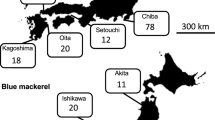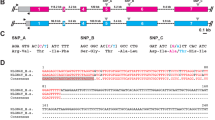Abstract
Advances in genome editing tools have reduced barriers to the creation of animal models. Due to their anatomical and physiological similarities to humans, there has been a growing need for pig models to study human diseases, for xenotransplantation and translational research. The ability to determine the sex of genetically modified embryos, cells or fetuses is beneficial for every project involving the production of transgenic animals. This strategy can improve the time-efficiency and lower the production costs. Additionally, sex assessment is very useful for wildlife studies to understand population behavior and structure. Thus, we developed a simple and fast PCR-based protocol for sex determination in pigs by using a unique primer set to amplify either the DDX3X or DDX3Y gene. The sex was 100% correctly assigned when tail genomic DNA, Day-35 fetus and hair samples from pigs were used. For both blastocysts and oocytes (84.6% and 96.5% of efficacy, respectively) the unidentified samples were potentially due to a limitation in sample size. Our assay also worked for domestic sheep (Ovis aries), American bison (Bison bison) and European cattle (Bos taurus) samples and by in silico analysis we confirmed X–Y amplicon length polymorphisms for the DDX3 gene in 12 other mammalian species. This PCR protocol for determining sex in pig tissues and cells showed to be simple, specific, highly reproducible and less time consuming as well as an important tool for other livestock species and wildlife studies.




Similar content being viewed by others
References
Bredbacka P, Kankaanpää A, Peippo J (1995) PCR-sexing of bovine embryos: a simplified protocol. Theriogenology 44:167–176. https://doi.org/10.1016/0093-691X(95)00166-6
Chen PR, Redel BK, Spate LD, Ji T, Salazar SR, Prather RS (2018) Glutamine supplementation enhances development of in vitro-produced porcine embryos and increases leucine consumption from the medium. Biol Reprod 99:938–948. https://doi.org/10.1093/biolre/ioy129
Dash HR, Rawat N, Das S (2020) Alternatives to amelogenin markers for sex determination in humans and their forensic relevance. Mol Biol Rep 47:2347–2360. https://doi.org/10.1007/s11033-020-05268-y
Ditton HJ, Zimmer J, Kamp C, Rapert-De Meyts E, Vogt PH (2004) The AZFa gene DBY (DDX3Y) is widely transcribed but the protein is limited to the male germ cells by translation control. Hum Mol Genet 13:2333–2341. https://doi.org/10.1093/hmg/ddh240
Fontanesi L, Scotti E, Russo V (2008) Differences of the porcine amelogenin X and Y chromosome genes (AMELX and AMELY) and their application for sex determination in pigs. Mol Reprod Dev 75:1662–1668. https://doi.org/10.1002/mrd.20903
Gokulakrishnan P, Kumar RR, Sharma BD, Mendiratta SK, Sharma D (2012) Sex determination of cattle meat by polymerase chain reaction amplification of the DEAD box protein (DDX3X/DDX3Y) gene. Asian Australas J Anim Sci 25:733–737. https://doi.org/10.5455/vetworld.2012.526-529
Grzybowski G, Prusak B, Romaniuk B (2006) A novel variant of the amelogenin gene (AMEL-X) in cattle and its implications for sex determinatione. Anim Sci Pap Rep 24:111–118
Hao YH, Yong HY, Murphy CN et al (2006) Production of endothelial nitric oxide synthase (eNOS) over-expressing piglets. Transgenic Res 15:739–750. https://doi.org/10.1007/s11248-006-9020-8
Hrovatin K, Kunej T (2018) Genetic sex determination assays in 53 mammalian species: literature analysis and guidelines for reporting standardization. Ecol Evol 8:1009–1018. https://doi.org/10.1002/ece3.3707
Lee K, Davis A, Zhang L et al (2015) Pig oocyte activation using a Zn2 + chelator, TPEN. Theriogenology 84(6):1024–1032. https://doi.org/10.1016/j.theriogenology.2015.05.036
Liu R, Low WY, Tearle R, Koren S, Ghurye J, Rhie A, Phillippy AM, Rosen BD, Bichkart DM, Smith TPL, Hiendleder S, Williams JL (2019) New insights into mammalian sex chromosome structure and evolution using high-quality sequences from bovine X and Y chromosomes. BMC Genom. https://doi.org/10.1186/s12864-019-6364-z
Madeja ZE, Pawlak P, Piliszek A (2019) Beyond the mouse: non-rodent animal models for study of early mammalian development and biomedical research. Int J Dev Biol 63:187–201. https://doi.org/10.1387/ijdb.180414ap
Marshall Graves JA (1998) Evolution of the mammalian Y chromosome and sex-determining genes. J Exp Zool 281:472–481
Matsumura T, Endo T, Isotani A, Ogawa M, Ikawa M (2019) An azoospermic factor gene, Ddx3y and its paralog, Ddx3x are dispensable in germ cells for male fertility. J Reprod Dev 65:121–128. https://doi.org/10.1262/jrd.2018-145
Morin PA, Nestler A, Rubio-Cisneros NT, Robertson KM, Mesnick SL (2005) Interfamilial characterization of a region of the ZFX and ZFY genes facilitates sex determination in cetaceans and other mammals. Mol Ecol 14:3275–3286. https://doi.org/10.1111/j.1365-294X.2005.02651.x
Pomp D, Good BA, Geisert RD, Corbin CJ, Conley AJ (1995) Sex identification in mammals with polymerase chain reaction and its use to examine sex effects on diameter of day-10 or-11 pig embryos. J Anim Sci 73:1408–1415. https://doi.org/10.2527/1995.7351408x
Redel BK, Prather RS (2015) Meganucleases revolutionize the production of genetically engineered pigs for the study of human diseases. Toxicologic Pathol 44:428–433. https://doi.org/10.1177/0192623315613160
Ryu J, Prather RS, Lee K (2018) Use of gene-editing technology to introduce targeted modifications in pigs. J Animal Sci Biotechnol 9:5. https://doi.org/10.1186/s40104-017-0228-7
Sathasivam K, Kageyama S, Chikuni K, Notarianni E (1995) Sex determination in the domestic pig by DNA amplification using the HMG-box sequence. Anim Reprod Sci 38:321–326. https://doi.org/10.1016/0378-4320(94)01371-R
Sekiguchi T, Sasaki H, Kurihara Y, Watanabe S, Moriyama D, Kurose N, Matsuki R, Yamazaki K, Saeki M (2010) New methods for species and sex determination in three sympatric Mustelids, Mustela itatsi, Mustela sibirica and Martes melampus. Mol Ecol Resour 10:1089–1091. https://doi.org/10.1111/j.1755-0998.2010.02842.x
Sembon S, Suzuki SI, Fuchimoto DI, Iwamoto M (2008) Sex identification of pigs using polymerase chain reaction amplification of the amelogenin gene. Zygote 16:327–332. https://doi.org/10.1017/S0967199408004826
Skinner BM, Sargent CA, Churcher C et al (2016) The pig X and y chromosomes: structure, sequence, and evolution. Genome Res 26:130–139. https://doi.org/10.1101/gr.188839.114
Strah R, Kunej T (2019) Molecular sexing assays in 114 mammalian species: in silico sequence reanalysis and a unified graphical visualization of diagnostic tests. Ecol. Evol 9:5018–5028. https://doi.org/10.1002/ece3.5093
Tyler-Smith C (2008) An evolutionary perspective on Y-chromosomal variation and male infertility. Int J Androl 31:376–382. https://doi.org/10.1111/j.1365-2605.2008.00889.x
Yang H, Wu Z (2018) Genome editing of pigs for agriculture and biomedicine. Front. Genet. 9:360. https://doi.org/10.3389/fgene.2018.00360
Zarzoso-Lacoste D, Jan PL, Lehnen L et al (2018) Combining noninvasive genetics and a new mammalian sex-linked marker provides new tools to investigate population size, structure and individual behaviour: an application to bats. Mol Ecol Resour 18:217–228. https://doi.org/10.1111/1755-0998.12727
Zhang X, Miao Y, Zhao JG et al (2010) Porcine oocytes denuded before maturation can develop to the blastocyst stage if provided a cumulous cell-derived coculture system. J Anim Sci 88:2604–2610. https://doi.org/10.2527/jas.2009-2714
Acknowledgements
We would like to thank Dr. Robert Schnabel, Msc. Emma Stephenson, MSc. Paula Chen, Msc. Eleonore O’neil and Dr. Jon Green for generously provide genomic DNA and tissue samples from different species to this present study. The results presented here were funded by the National Institutes of Health via funding from OD, NIAID and NHLBI via U42OD011140.
Funding
The results presented here were funded by the National Institutes of Health via funding from OD, NIAID and NHLBI via U42OD011140.
Author information
Authors and Affiliations
Contributions
C. G. L., W. C. W, and K. D. W designed the experiments. C.G.L., A.M.S., M. S. S. and L. D. S. conducted the experiments. C.G.L., K. D. W., and R. S. P. analyzed the data and wrote the manuscript.
Corresponding author
Ethics declarations
Conflict of interest
The authors have declared that no conflict of interest exists.
Additional information
Publisher's Note
Springer Nature remains neutral with regard to jurisdictional claims in published maps and institutional affiliations.
Rights and permissions
About this article
Cite this article
Lucas, C.G., Spate, A.M., Samuel, M.S. et al. A novel swine sex-linked marker and its application across different mammalian species. Transgenic Res 29, 395–407 (2020). https://doi.org/10.1007/s11248-020-00204-z
Received:
Accepted:
Published:
Issue Date:
DOI: https://doi.org/10.1007/s11248-020-00204-z




